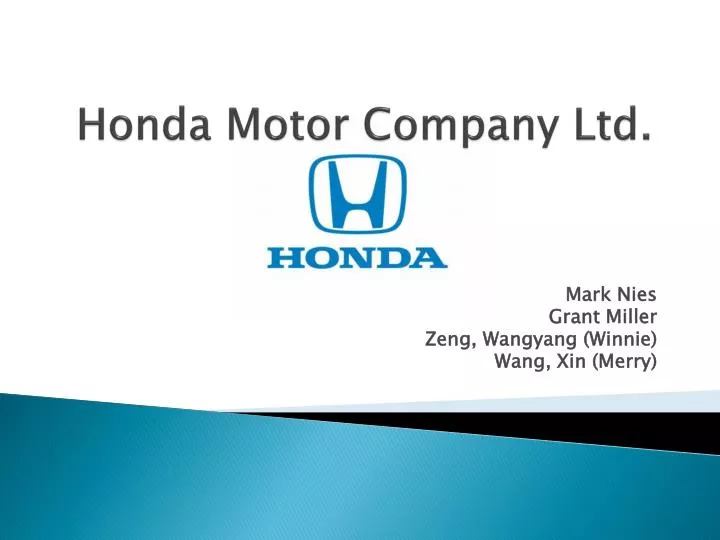HUB 0895 3710 30344 (AMP), Oli Motor Honda Beat, Oli Motor Honda, Oli Motor Matic,
HUB 0895 3710 30344 (AMP), Oli Motor Honda Beat, Oli Motor Honda, Oli Motor Matic, Oli Motor Matic Terbaik, Oli Motor Terbaik, Oli Motor Aerox, Oli Motor Termahal, Oli Motor Matic Shell, Oli Motor Nmax, Oli Motor Honda Vario 150, (AUTO MULTI PRODUCT) Salam Kenal, Kami dari AUTO MULTI PRODUCT ingin memperkenalkan Pelumas untuk Mobil dan Motor anda yang sangat di rekomendasikan untuk kesehatan dan kekuatan mesin kendaraan anda. OLI FK ini sudah melewati tahap pengujian dari 2 Lembaga Besar Di DUNIA !!! yaitu API SERVICE SN & API FOR GASOLINE ENGINES. 2 Lembaga tersebut lah yang sudah menguji kehebatan dari Oli Fk Massimo ini yang sangat bermanfaat kedepanya untuk kendaraan anda. Dan anda tidak peru takut dan ragu karena oli ini 100% ASLI NO OPLOS Keunggulan dari Oli Fk ini adalah : 1. Menjaga kesehatan mesin anda 2. Lebih irit bahan bakar 3. Lebih responsif 4. irit oli (TIDAK MENGUAP) 5. Tarikan kendaraan anda menjadi enteng 6. Pemakaian jarak tempuh lebih panjang KILO METERNYA nya 7. Mengoper gigi menjadi lancar tidak selip / macet 8. Memperhalus suara mesin 9. ekonomis 10. Menghancurkan sumbatan yang ada di mesin 11. Jarak Tempuh ASLI 10 RIBU KM 12. JAMINAN ASLI 100% NO OPLOS!!! Di setiap type oli memiliki kekentalan yang berbeda-beda. Kekentalan dalam oli di sebut dengan SAE .Kepanjangan dari SAE (Sociaty of Automotive Engineers) SAE adalah sebagai identifikasi dari kekentalan oli . Kami menyediakan berbagai macam type kekentalan oli yang anda butuhkan untuk kendaraaan anda. HARGA SANGAT MURAH DAN TERJAMIN HUB : 0895 3710 30344 (WA) A/N Herryanto prawira KAMI SEBAGAI DISTRIBUTOR AUTO MULTI PRODUCT INDONESIA KUNJUNGI WEBSITE DI BAWAH INI, BANYAK PRODUCT UNTUK PERAWATAN KENDARAAN ANDA !!! WEBSITE : https://automultiproduct.com/ FACEBOOK : https://www.facebook.com/amp.amp.71619533 TOKOPEDIA : https://tokopedia.link/0UMUckXNVY t https://tokopedia.link/6nGL2fMdc1 t https://tokopedia.link/79EKpOKMSZ SHOPPE : https://shopee.co.id/oilfkmassimoautooilengine?v=eb7&smtt=0.0.3 BLOGGER : https://ampdistributorolifkmassimoindonesia.blogspot.com/2019/06/hub-wa-0893-3710-30344-distributor-oli.html WHATSAPP : https://wa.me/62895371030344? linktree : https://linktr.ee/Automultiproductindonesia SAAT OLI SUDAH MENCAPAI 10.000 PEMAKAIAN, KENDARAAN MASIH TERASAN ENAK DAN ENTENG TARIKANYA, TARIKANPUN TERASA ENTENG DAN KECEPATAN MOBIL BERLARI PUN MENJADI MAKSIMAL. MENJAGA MESIN ANDA SELALU TERAWAT DENGAN MENGGUNAKAN OLI FK INI. BUKAN HANYA OMONG KOSONG TETAPI FAKTA!!! #oli #oil #motor #mobil #motorcycle #car #cars #mechine #mesin #vechile #kendaraan #racing #otomotif #automotive #oliterbaik #olimesin #olidiesel #olifk #olijepang #oliberkualitas #sperpart #distributor #distributoroli #tangerang #jakarta #jabodetabek #indonesia #bengkelmobil #bengkel #depok #bogor #bekasi #bandung #surabaya #solo #malang #bali #lombok #flores JAKARTA, Jakarta Barat, Jakarta Pusat, Jakarta Selatan, Jakarta Timur, Jakarta Utara, Pulau Pramuka, Budi Utomo, Kembangan, Menteng, Kebayoran Baru, Cakung, Koja, TANGERANG, Cilegon5, Serang, Tangerang Selatan, Pandeglang, Ciruas, Tigaraksa, Rangkasbitung, Pandeglang, Serang, BANDUNG, Banjar, Bekasi, Bogor, Cimahi, Cirebon, Depok, Sukabumi, Tasikmalaya, Bandung Barat, Bekasi, Bogor, Ciamis, Cianjur, Cirebon, Garut, Indramayu, Karawang, Kuningan, Majalengka, Pangandaran, Purwakarta, Subang, Sukabumi, Sumedang, Tasikmalaya, Soreang, Ngamprah, Cikarang, Cibinong, Ciamis, Cianjur, Sumber, Garut, Indramayu, Karawang, Kuningan, Majalengka, Parigi, Purwakarta, Subang, Palabuhanratu, Sumedang, Singaparna, SEMARANG, Surakarta, Magelang, Pekalongan, Salatiga, Tegal, Banyumas, Batang, Blora, Boyolali, Brebes, Cilacap, Demak, Grobogan, Jepara, Karanganyar, Kebumen, Kendal, Klaten, Kudus, Magelang, Pati, Pekalongan, Pemalang, Purbalingga, Purworejo, Rembang, Solo, Sragen, Sukoharjo, Tegal, Temanggung, Wonogiri, Wonosobo, Purwokerto, Batang, Blora, Boyolali, Brebes, Cilacap, Demak, Purwodadi, Jepara, Karanganyar, Kebumen, Kendal, Klaten, Kudus, Mungkid, Pati, Kajen, Pemalang, Purbalingga, Purworejo, Rembang, Ungaran, Sragen, Sukoharjo, Slawi, Temanggung, Wonogiri, Wonosobo, YOGYAKARTA, Jogja, Jogjakarta, Bantul, Gunungkidul, Kulon Progo, Sleman, Wonosari, Wates, Sleman, SURABAYA, Batu, Blitar, Kediri, Madiun, Malang, Mojokerto, Pasuruan, Probolinggo, Banyuwangi, Blitar, Bojonegoro, Bondowoso, Gresik, Jember, Jombang, Kediri, Lamongan, Lumajang, Madiun, Magetan, Malang, Mojokerto, Nganjuk, Ngawi, Pacitan, Pamekasan, Pasuruan, Ponorogo, Probolinggo, Sampang, Sidoarjo, Situbondo, Sumenep, Trenggalek, Tuban, Tulungagung, Banyuwangi, Kanigoro, Bojonegoro, Bondowoso, Gresik, Jember, Jombang, Ngasem, Lamongan, Lumajang, Caruban, Magetan, Kepanjen, Mojosari, Nganjuk, Ngawi, Pacitan, Pamekasan, Bangil, Ponorogo, Kraksaan, Sampang, Sidoarjo, Situbondo, Sumenep, Trenggalek, Tuban, Tulungagung, MEDAN, Binjai, Gunungsitoli, Padangsidempuan, Pematangsiantar, Sibolga, Tanjungbalai, Tebing Tinggi, Asahan, Batubara, Dairi, Deli Serdang, Humbang Hasundutan, Karo, Labuhanbatu, Labuhanbatu Selatan, Labuhanbatu Utara, Langkat, Mandailing Natal, Nias, Nias Barat, Nias Selatan, Nias Utara, Padang Lawas, Padang Lawas Utara, Pakpak Bharat, Samosir, Serdang Bedagai, Simalungun, Tapanuli Selatan, Tapanuli Tengah, Tapanuli Utara, Toba Samosir, Kisaran, Limapuluh, Sidikalang, Lubuk Pakam, Dolok Sanggul, Kabanjahe, Rantau Prapat, Pinang, Aek Kanopan, Stabat, Panyabungan, Gunung Sitoli, Lahomi, Teluk Dalam, Lotu, Sibuhuan, Gunung Tua, Salak, Pangururan, Sei Rampah, Raya, Sipirok, Pandan, Tarutung, Balige, BANDA ACEH, Langsa, Lhokseumawe, Sabang, Subulussalam, Aceh Barat, Aceh Barat Daya, Aceh Besar, Aceh Jaya, Aceh Selatan, Aceh Singkil, Aceh Tamiang, Aceh Tengah, Aceh Tenggara, Aceh Timur, Aceh Utara, Bener Meriah, Bireuen, Gayo Lues, Nagan Raya, Pidie, Pidie Jaya, Simeulue, Meulaboh, Blangpidie, Jantho, Calang, Tapak Tuan, Singkil, Karang Baru, Takengon, Kutacane, Idi Rayeuk, Lhoksukon, Simpang Tiga Redelong, Bireuen, Blang Kejeren, Suka Makmue, Sigli, Meureudu, Sinabang, PADANG, Bukittinggi, Padangpanjang, Pariaman, Payakumbuh, Sawahlunto, Solok, Agam, Dharmasraya, Kepulauan Mentawai, Lima Puluh Kota, Padang Pariaman, Pasaman, Pasaman Barat, Pesisir Selatan, Sijunjung, Solok, Solok Selatan, Tanah Datar, Lubuk Basung, Pulau Punjung, Tuapejat, Sarilamak, Parit Malintang, Lubuk Sikaping, Simpang Ampek, Painan, Muaro Sijunjung, Arosuka, Padang Aro, Batusangkar, PEKANBARU, Dumai, Bengkalis, Indragiri Hilir, Indragiri Hulu, Kampar, Kepulauan Meranti, Kuantan Singingi, Pelalawan, Rokan Hilir, Rokan Hulu, Siak, Bengkalis, Tembilahan, Rengat, Bangkinang, Selatpanjang, Teluk Kuantan, Pangkalan Kerinci, Bagan Siapi-api, Pasir Pengaraian, Siak Sri Indrapura, BATAM, Tanjung Pinang, Bintan, Karimun, Kepulauan Anambas, Lingga, Natuna, Bandar Seri Bentan, Tanjung Balai Karimun, Tarempa, Daik, Ranai, JAMBI, Sungai Penuh, Batanghari, Bungo, Kerinci, Merangin, Muaro Jambi, Sarolangun, Tanjung Jabung Barat, Tanjung Jabung Timur, Tebo, Muara Bulian, Muara Bungo, Siulak, Bangko, Sengeti, Sarolangun, Kuala Tungkal, Muara Sabak, Muara Tebo, BENGKULU, Bengkulu Selatan, Bengkulu Tengah, Bengkulu Utara, Kaur, Kepahiang, Lebong, Mukomuko, Rejang Lebong, Seluma, Manna, Karang Tinggi, Arga Makmur, Bintuhan, Kepahiang, Muara Aman, Mukomuko, Curup, Tais, PALEMBANG, Lubuklinggau, Pagar Alam, Prabumulih, Banyuasin, Empat Lawang, Lahat, Muara Enim, Musi Banyuasin, Musi Rawas, Musi Rawas Utara, Ogan Ilir, Ogan Komering Ilir, Ogan Komering Ulu, Ogan Komering Ulu Selatan, Ogan Komering Ulu Timur, Penukal Abab Lematang Ilir, Pangkalan Balai, Tebing Tinggi, Lahat, Muara Enim, Sekayu, Muara Beliti Baru, Rupit, Indralaya, Kayu Agung, Baturaja, Muaradua, Martapura, Talang Ubi, BANGKA, Pangkal Pinang, Bangka Barat, Bangka Selatan, Bangka Tengah, Belitung, Belitung Timur, Sungai Liat, Muntok, Toboali, Koba, Tanjung Pandan, Manggar, BANDAR LAMPUNG, Metro, Lampung Barat, Lampung Selatan, Lampung Tengah, Lampung Timur, Lampung Utara, Mesuji, Pesawaran, Pesisir Barat, Pringsewu, Tanggamus, Tulang Bawang, Tulang Bawang Barat, Way Kanan, Liwa, Kalianda, Gunung Sugih, Sukadana, Kotabumi, Mesuji, Gedong Tataan, Krui, Pringsewu, Agung, Menggala, Tulang Bawang Tengah, Blambangan Umpu, PONTIANAK, Singkawang, Bengkayang, Kapuas Hulu, Kayong Utara, Ketapang, Kubu Raya, Landak, Melawi, Mempawah, Sambas, Sanggau, Sekadau, Sintang, Bengkayang, Putussibau, Sukadana, Ketapang, Sungai Raya, Ngabang, Nanga Pinoh, Mempawah, Sambas, Sanggau, Sekadau, Sintang, BANJARMASIN, Banjarbaru, Balangan, Banjar, Barito Kuala, Hulu Sungai Selatan, Hulu Sungai Tengah, Hulu Sungai Utara, Kotabaru, Tabalong, Tanah Bumbu, Tanah Laut, Tapin, Paringin, Martapura, Marabahan, Kandangan, Barabai, Amuntai, Kotabaru, Tanjung, Batulicin, Pelaihari, Rantau, PALANGKA RAYA, Barito Timur, Barito Utara, Gunung Mas, Kapuas, Katingan, Kotawaringin Barat, Kotawaringin Timur, Lamandau, Murung Raya, Pulang Pisau, Sukamara, Seruyan, Buntok, Tamiang Layang, Muara Teweh, Kuala Kurun, Kuala Kapuas, Kasongan, Pangkalan Bun, Sampit, Nanga Bulik, Puruk Cahu, Pulang Pisau, Sukamara, Kuala Pembuang, SAMARINDA, Balikpapan, Bontang, Berau, Kutai Barat, Kutai Kartanegara, Kutai Timur, Mahakam Ulu, Paser, Penajam Paser Utara, Tanjung Redeb, Sendawar, Tenggarong, Sangatta, Ujoh Bilang, Tana Paser, Penajam, Tarakan, Bulungan, Malinau, Nunukan, Tana Tidung, Tanjung Selor, Malinau, Nunukan, Tideng Pale, GORONTALO, Boalemo, Bone Bolango, Gorontalo, Gorontalo Utara, Pohuwato, Tilamuta, Suwawa, Limboto, Kwandang, Marisa, MAKASSAR, Wajo, Palopo, Parepare, Bantaeng, Barru, Bone, Bulukumba, Enrekang, Gowa, Jeneponto, Kepulauan Selayar, Luwu, Luwu Timur, Luwu Utara, Maros, Pangkajene dan Kepulauan, Pinrang, Sidenreng Rappang, Sinjai, Soppeng, Takalar, Tana Toraja, Toraja Utara, Bantaeng, Barru, Watampone, Bulukumba, Enrekang, Sungguminasa, Bontosunggu, Benteng, Belopa, Malili, Masamba, Turikale, Pangkajene, Pinrang, Watang Sidenreng, Balangnipa, Watansoppeng, Pattallassang, Makale, Rantepao, Sengkang, KENDARI, Bau-Bau, Bombana, Buton, Buton Selatan, Buton Tengah, Buton Utara, Kolaka, Kolaka Timur, Kolaka Utara, Konawe, Konawe Kepulauan, Konawe Selatan, Konawe Utara, Muna, Muna Barat, Wakatobi, Rumbia, Pasarwajo, Batauga, Labungkari, Buranga, Kolaka, Tirawuta, Lasusua, Unaaha, Langara, Andolo, Wanggudu, Raha, PALU, Banggai, Banggai Kepulauan, Banggai Laut, Buol, Donggala, Morowali, Morowali Utara, Parigi Moutong, Poso, Sigi, Tojo Una-Una, Tolitoli, Luwuk, Salakan, Banggai, Buol, Banawa, Bungku, Kolonodale, Parigi, Poso, Sigi Biromaru, Ampana, Tolitoli, MANADO, Bitung, Kotamobagu, Tomohon, Bolaang Mongondow, Bolaang Mongondow Selatan, Bolaang Mongondow Timur, Bolaang Mongondow Utara, Kepulauan Sangihe, Kepulauan Siau Tagulandang Biaro, Kepulauan Talaud, Minahasa, Minahasa Selatan, Minahasa Tenggara, Minahasa Utara, Lolak, Bolaang Uki, Tutuyan, Boroko, Tahuna, Ondong Siau, Melonguane, Tondano, Amurang, Ratahan, Airmadidi, MAJENE, Mamasa, Mamuju, Mamuju Tengah, Mamuju Utara, Polewali Mandar, Majene, Mamasa, Mamuju, Tobadak, Pasangkayu, Polewali, AMBON, Tual, Buru, Buru Selatan, Kepulauan Aru, Maluku Barat Daya, Maluku Tengah, Maluku Tenggara, Maluku Tenggara Barat, Seram Bagian Barat, Seram Bagian Timur, Namlea, Namrole, Dobo, Tiakur, Masohi, Langgur, Saumlaki, Piru, Bula, TERNATE, Tidore Kepulauan, Halmahera Barat, Halmahera Tengah, Halmahera Timur, Halmahera Selatan, Halmahera Utara, Kepulauan Sula, Pulau Morotai, Pulau Taliabu, Jailolo, Weda, Maba, Labuha, Tobelo, Sanana, Daruba, Bobong, DENPASAR, Badung, Bangli, Buleleng, Gianyar, Jembrana, Karangasem, Klungkung, Tabanan, Bangli, Singaraja, Gianyar, Negara, Amlapura, Klungkung, Tabanan, Mengwi, MATARAM, Bima, Bima, Dompu, Lombok Barat, Lombok Tengah, Lombok Timur, Lombok Utara, Sumbawa, Sumbawa Barat, Woha, Dompu, Gerung, Praya, Selong, Tanjung, Sumbawa Besar, Taliwang, KUPANG, Alor, Belu, Ende, Flores Timur, Kupang, Lembata, Malaka, Manggarai, Manggarai Barat, Manggarai Timur, Ngada, Nagekeo, Rote Ndao, Sabu Raijua, Sikka, Sumba Barat, Sumba Barat Daya, Sumba Tengah, Sumba Timur, Timor Tengah Selatan, Timor Tengah Utara, Kalabahi, Atambua, Ende, Larantuka, Oelamasi, Lewoleba, Betun, Ruteng, Labuan Bajo, Borong, Bajawa, Mbay, Baa, Seba, Maumere, Waikabubak, Tambolaka, Waibakul, Waingapu, Soe, Kefamenanu JAYAPURA, Asmat, Biak Numfor, Boven Digoel, Deiyai, Dogiyai, Intan Jaya, Jayapura, Jayawijaya, Keerom, Kepulauan Yapen, Lanny Jaya, Mamberamo Raya, Mamberamo Tengah, Mappi, Merauke, Mimika, Nabire, Nduga, Paniai, Pegunungan Bintang, Puncak, Puncak Jaya, Sarmi, Supiori, Tolikara, Waropen, Yahukimo, Yalimo, Agats, Biak, Tanah Merah, Tigi, Kigamani, Sugapa, Sentani, Wamena, Waris, Serui, Tiom, Burmeso, Kobakma, Kepi, Merauke, Timika, Nabire, Kenyam, Enarotali, Oksibil, Ilaga, Kotamulia, Sarmi, Sorendiweri, Karubaga, Botawa, Sumohai, Elelim, SORONG, Fakfak, Kaimana, Manokwari, Manokwari Selatan, Maybrat, Pegunungan Arfak, Raja Ampat, Sorong, Sorong Selatan, Tambrauw, Teluk Bintuni, Teluk Wondama, Fakfak, Kaimana, Manokwari, Ransiki, Kumurkek, Anggi, Waisai, Aimas, Teminabuan, Fef, Bintuni, Rasiei, oli, motor, mobil, bensin, diesel, solar, matic, manual, transmisi, gardan, gear, racing, kendaraan, bermotor, oli shell, castrol, top 1 , liquimoly, mesin, engine flush, radiator coolant, oli terbaik, oli bagus, oli mobil avanza, oli mobil calya, oli mobil pajero, oli mobil fortuner, oli mobil alphard, oli mobil nissan, oli mobil toyota, oli mobil honda, oli mobil mitsubisi, oli mobil sigra, oli nomor 1, oli jepang, oli pertamina, oli petroasia, oli mesran, oli yamalub
124 views • 12 slides


